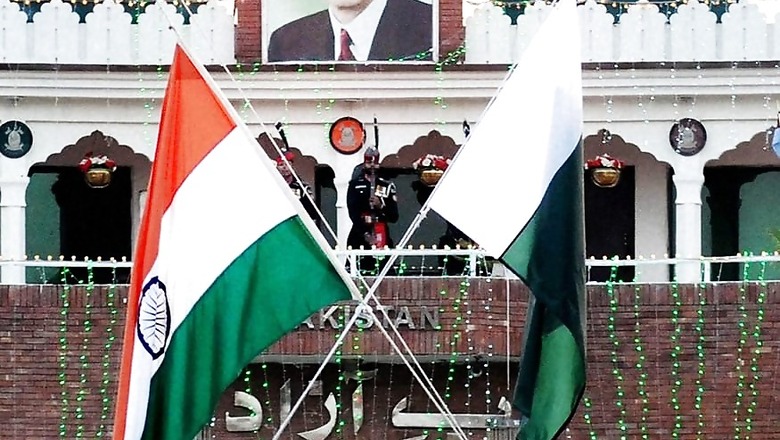
views
A day after the Cabinet Committee on Security (CCS) led by PM Narendra Modi withdrew the Most Favoured Nation (MFN) status to Pakistan, India raised customs duty on all goods imported from Pakistan to 200% with immediate effect.
The decision was taken after attack on a CRPF convoy in J&K’s Pulwama by Pakistan-based Jaish-e-Mohammad in which 40 personnel were killed.
MFN status — provided to Pakistan in 1996 — was meant to ensure non-discriminatory trade practices. Pakistan, however, has not reciprocated with a similar MFN status to India.
As regards trade practices before the withdrawal of MFN status, both Pakistan and India allowed all goods to be imported and exported from their respective countries, except for a specific list of items that were banned.
Pakistan’s exports to India, which now stand impacted by the 200% tariff, stood at about $454 million during 2016-2017, according to the Indian Council for Research on International Economic Relations (ICRIER), an economic policy think-tank based in Delhi. Some of the major commodities that were imported were fruits and nuts, plastering materials and cement, cotton, leather etc. On the other hand, India’s exports to Pakistan stood at about $1.8 billion during the same period and included items like cotton, organic chemicals, plastics dyeing materials etc.
So, in effect, bilateral trade between the two countries stands at about $2 billion. But this figure is highly minuscule considering the size of both the economies.
“As a signalling instrument, it (withdrawal of MFN) makes a difference,” said Dr. Amita Batra, Professor, South Asian Studies, Jawaharlal Nehru University. Previously, she also worked as a senior fellow at ICRIER. “It signifies an official displeasure with the recent happenings in J&K,” she said.
But apart from this diplomatic shift, the withdrawal of MFN and imposition of 200% tariffs doesn’t change much on the ground as regards trade relations. "The withdrawal of MFN may not have a significant trade impact as bilateral trade is very small,” she added.
For comparison, it is also worth noting the kind of trade relations India shares with relatively smaller neighbouring economies. For example, India’s trade with Bangladesh stood at about $9 billion during 2017-2018.
“Trade between the two countries has been at a stagnant level of about $2 billion since the past decade or so,” said D. Suba Chandran, Professor and Dean, School of Conflict and Security Studies, National Institute of Advanced Studies (NIAS). “But trade with other neighbouring countries like Sri Lanka and Bangladesh has been steadily increasing,” he explained.
“So, a tariff of 200% on goods being imported from Pakistan is not going to make a big impact,” he said.
This applies to the potential retaliatory tariffs too, he added.
But an important caveat in the size of trade relations between India and Pakistan is the fact that an overwhelming majority of the trade happens via informal channels, ie much of the trade is routed through Dubai, Singapore, Iran etc.
“For example, dates are sourced from the Balochistan and Pashtun areas, routed through Iran and then brought into India,” Chandran said.

Then there’s illegal trade. “Put together, illegal and informal trade stand at about $8-10 billion,” Chandran said, noting that a possible impact of worsening bilateral trade relations could be an increase in informal trade.
Apart from the withdrawal of MFN status and the imposition of a 200% tariff, the other trade-related pressure that India is currently trying to exert on Pakistan is through the Financial Action Task Force (FATF), an inter-governmental body aimed at combating money laundering and terror financing.
According to reports, India is currently preparing a dossier that is to be presented at a meeting of FATF being held in Paris this week that links Pakistan to the attack in Pulwama so as to seek the blacklisting of Pakistan as part of economic punitive measures.
It should be noted that Pakistan is currently on the FATF grey list for “structural deficiencies” in combating money laundering and terror financing and is on notice to be blacklisted by October 2019 if it doesn’t take the requisite measures. The grey listing brought about increased scrutiny from regulators and financial institutions, increased transaction costs and a dampening in trade and investment flows.
The Asia Pacific group of the FATF had done a review of Pakistan’s institutional and legal framework in October 2018 to check if the country had the right setup for combating money laundering and terror financing. The findings pointed at the lack of robust institutional mechanism to track down financial networks.
"Now that the blacklisting is being reviewed, India is trying to push ahead the process. If this is done, it could limit Pakistan’s access to financial networks," Dr Batra said.
But progress, as regards the FATF blacklisting Pakistan, cannot be solely influenced by India. “India has limited powers here… FATF is largely influenced by India and China,” Chandran explained.
But all of this only signals at worsening trade relations, which is gloomy considering the trade potential between India and Pakistan — pegged at about $37 billion by the World Bank in a study published in 2018.
“Bilateral relations between India and Pakistan have been such that trade potential could never be realized,” Dr Batra said.
“It is a disaster... not only between India and Pakistan but for the South-Asian countries as a whole,” Chandran said, adding “Intra-SAARC trade is the lowest among other regional trade blocks. Our trade with each other is only about 5% of our total trade.”
As for intra-SAARC trade, Dr Batra notes that the region is the least integrated among similar blocks, hinting at a vast room for improvement.



















Comments
0 comment